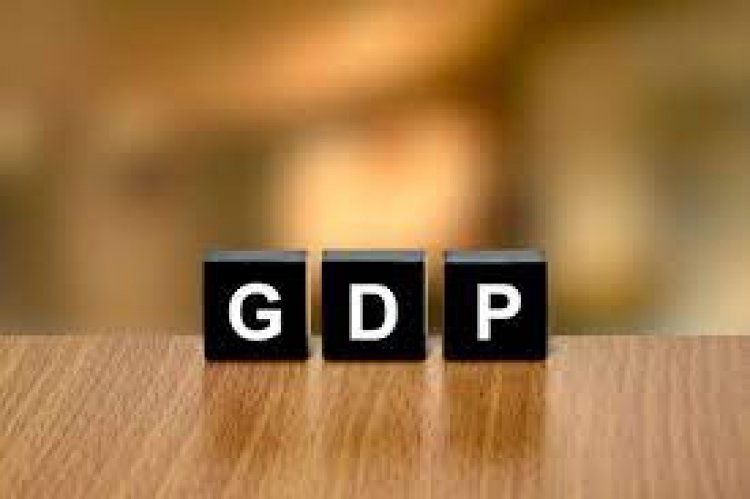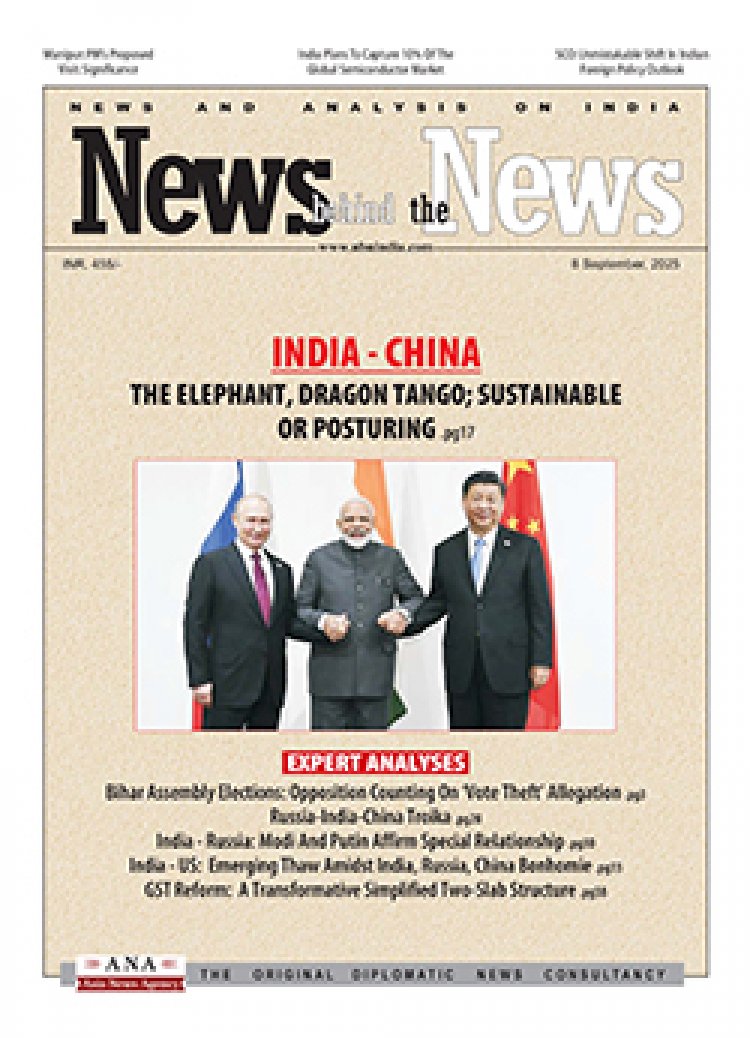GDP surges 7.6% in Q2
STORIES, ANALYSES, EXPERT VIEWS

As per initial estimates from the National Statistical Office, despite a growth downturn in the farm and services sectors as well as consumer spending, Gross Domestic Product (GDP) grew at a higher-than-expected 7.6% in the July to September 2023 quarter.
The second quarter (Q2) growth was slightly lower than the 7.8% rise in the previous quarter, but well over the central bank’s projected uptick of 6.5%. Growth in the Gross Value Added (GVA) in the economy eased slight to 7.4% in the second quarter (Q2) of 2023-24, from 7.6% in Q1. But the GVA growth in the farm sector skidded sharply to just 1.2% from 3.5% in Q1 while it more than halved for services sectors such as trade, hotels and transport from 9.2% in Q1 to 4.3%.
The first half of 2023-24 has thus provisionally recorded a 7.7% growth in GDP, with the GVA rising 7.6%, led by a 10.5% growth in construction and 9.3% uptick in manufacturing. While growth is expected to moderate in the second half of the year, economists expect the strong first half numbers to lift the full year performance by 0.1% to 0.2% over current projections.
Annual growth estimated at 6.7%: The Reserve Bank of India (RBI) and the government expect GDP to grow 6.5% this year. “Considering that the RBI expects Q3 and Q4 GDP growth at 6% and 5.7%, respectively, the annual growth is estimated at 6.7%,” said EY India chief policy adviser D.K. Srivastava, who attributed the buoyant first half growth “largely” to government spends dominated by front-loaded capex.
Sector wise growth: Beyond the headline growth number, the trends that emerge from the disaggregated sector-wise data require closer examination.
One, the agricultural sector has fared poorly. Growth has slipped from 3.5 per cent in the first quarter to 1.2 per cent in the second quarter. That the outlook for the sector isn’t promising for the second half of the year as well will have implications for rural demand. Two, the industrial sector (including construction) has fared much better. It grew at 13.2 per cent in the second quarter, up from 5.5 per cent in the first quarter, buoyed by a favourable base effect, and healthy growth in manufacturing. The manufacturing sector grew by 13.9 per cent, up from 4.7 per cent. As per a report by economists at Bank of Baroda, even as sales growth was subdued, corporate profitability increased in the second quarter, in part due to lower commodity prices. Construction has also fared well, growing by 13.3 per cent. Alongside, data released showed that the index of eight core infrastructure sectors (including steel, cement and electricity, among others) grew on average at 10.5 per cent during July-October, up from 6.1 per cent during April-June. Three, the services sector has slowed down. It grew by 5.8 per cent in the second quarter, down from 10.3 per cent in the first quarter, dragged down by sluggish performance of trade, hotels, transport and communication and the financial, real estate and professional services sectors.
Private consumption has slowed down sharply from 6 per cent to 3.1 per cent, indicating continued weakness in segments of the population. On the other hand, investment activity continued to be healthy, growing by 11 per cent in the second quarter. Government spending also remains robust. In fact, as per India Ratings and Research, the combined capex of the central government and 26 state governments grew by 26.7 per cent in the second quarter.
An upward bias to GDP growth forecast: Analysing the growth numbers, Dharmakirti Joshi (an economic analyst) writes “for the second straight quarter, India’s gross domestic product (GDP) surprised positively by growing a robust 7.6%, after the 7.8% logged in the first quarter.Great going, indeed.This creates an upward bias to CRISIL’s GDP growth forecast of 6.4% this fiscal.
“Clearly, elevated food inflation, which erodes discretionary spending capacity, and errant rains have not curtailed momentum. Other high-frequency indicators such as the Purchasing Managers’ Index for manufacturing (57.9) remained in the strong expansion zone and this is reflected in 13.9% growth in manufacturing value-added, which also benefited from the weak base of last fiscal. Government revenues, particularly from Goods and Services Tax (GST), have been robust due to continued streamlining of the ecosystem and the strong growth momentum.
Positive impacts: The government continues to encourage investments. 1) In the July-September quarter, capital expenditure (capex) by the Centre and 18 major states grew 26% and 39%, respectively. This helped in keeping the overall investment growth ahead of GDP growth and increased its share in GDP to 35.3%.2).”
2) Construction surged 13.3%, buoyed by government spending on infrastructure and a resurgence in real estate.
3) Low input costs also helped – the Wholesale Price Index (WPI) for non-food items, a proxy for input costs, decreased 3.0% on-year.
4) The strong growth in construction “bodes well for employment, as it is one of the most labour-intensive sectors.The services sector slowed to 5.8% over a high base. Also tepid was private consumption growth at 3.1%. Urban consumption, underpinned by robust services growth and healthy corporate wage increments, is likely to have outperformed rural consumption.”
In rural areas, writes Joshi “demand for the Mahatma Gandhi National Rural Employment Guarantee Act (MGNREGA) scheme has risen and wages remain flattish. Strong domestic demand and government capex also reflected in positive credit quality, according to CRISIL Ratings. The credit ratio (ratio of rating upgrades to downgrades) remained a healthy 1.9 in the first half of the fiscal.So far so good.We expect moderation in the second half, owing to both global and domestic factors. The domestic ones are interest rates and sub-normal monsoon. Interest rates typically impact the economy with a lag, initially slowing the economy before impacting inflation. The peak impact of the rate hikes implemented since April 2022 will be experienced in the second half of the fiscal. Clearly, elevated food inflation, which erodes discretionary spending capacity, and errant rains have not curtailed momentum. The government continues to encourage investments.”
















